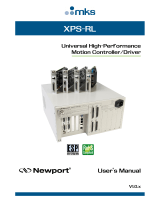Omron H8PS-8BP is an electronic cam switch with eight-cam control capabilities, offering high-performance and ease of use for various automation applications. It features simple replacement of mechanical cam switches, user-friendly single-function keys, and compatibility with 330-rpm input for precise timing control. Additionally, it includes useful functions such as encoder rotation direction switching and encoder origin designation. With a bright LCD backlight display, the H8PS-8BP enhances visibility and user experience.
Omron H8PS-8BP is an electronic cam switch with eight-cam control capabilities, offering high-performance and ease of use for various automation applications. It features simple replacement of mechanical cam switches, user-friendly single-function keys, and compatibility with 330-rpm input for precise timing control. Additionally, it includes useful functions such as encoder rotation direction switching and encoder origin designation. With a bright LCD backlight display, the H8PS-8BP enhances visibility and user experience.



















-
 1
1
-
 2
2
-
 3
3
-
 4
4
-
 5
5
-
 6
6
-
 7
7
-
 8
8
-
 9
9
-
 10
10
-
 11
11
-
 12
12
-
 13
13
-
 14
14
-
 15
15
-
 16
16
-
 17
17
-
 18
18
-
 19
19
Omron H8PS-8B User manual
- Type
- User manual
- This manual is also suitable for
Omron H8PS-8BP is an electronic cam switch with eight-cam control capabilities, offering high-performance and ease of use for various automation applications. It features simple replacement of mechanical cam switches, user-friendly single-function keys, and compatibility with 330-rpm input for precise timing control. Additionally, it includes useful functions such as encoder rotation direction switching and encoder origin designation. With a bright LCD backlight display, the H8PS-8BP enhances visibility and user experience.
Ask a question and I''ll find the answer in the document
Finding information in a document is now easier with AI
Related papers
Other documents
-
Autonics ROTARY ENCODER Pressure Sensors User guide
-
Parker SPD 16N User manual
-
Siemens SINAMICS S120 Function Manual
-
IAI PSEL Operating instructions
-
Kollmorgen BDS5 Installation And Setup Manual
-
HANYOUNG NUX GF7 Owner's manual
-
 Newport XPS-RL Motion Controller User manual
Newport XPS-RL Motion Controller User manual
-
Miller JETLINE 9900-CWF-50 COLD WIRE FEEDER Owner's manual
-
Panasonic AV-HS450N User manual
-
Mitsubishi Electric MR-MQ100 User manual



















